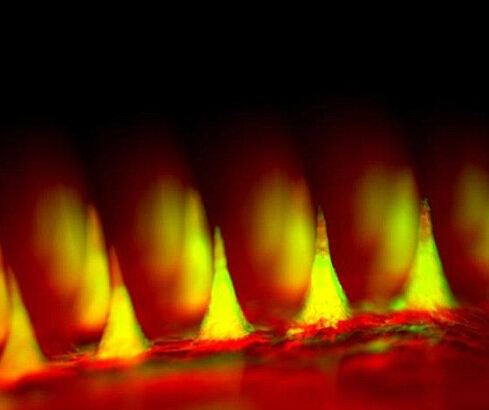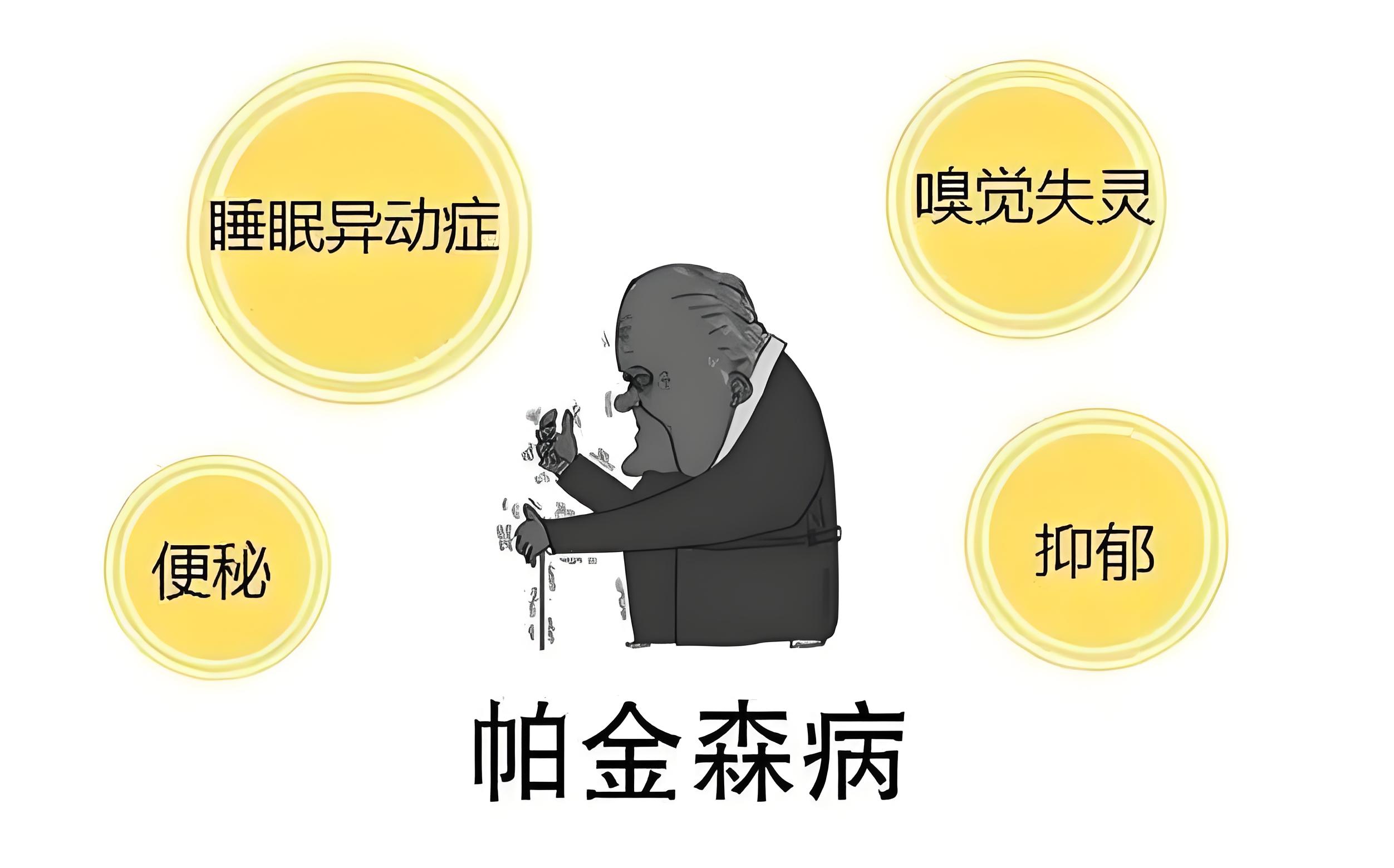注射胰岛素的痛苦将会成为过去。研究人员发现了一个聪明的修补程序,可以自动释放胰岛素需要时。它可以监测血液,当它检测到血糖水平升高,胰岛素分泌量。

补丁-方形薄不大于一个便士覆盖超过一百小针,每一个睫毛的大小。 这些“微针”包装为快速释放他们的货物当血糖水平太高胰岛素和葡萄糖敏感酶的微观的存储单元。这是发表在美国国家科学院院刊上,发现新的,无痛的补丁可以降低1型糖尿病的长达九小时的小鼠血糖 。更多的临床前试验和人体临床试验将在后续的补丁可以给予患者需要,但该方法显示出巨大的潜力。
“我们设计了一个用于糖尿病,快速修补,易于使用,并且是由无毒,生物相容性材料,共同高级作者镇古称。整个系统可以进行个性化占糖尿病患者的体重和胰岛素的敏感性,”他说,“这样我们可以让智能补丁更聪明。”糖尿病影响着全球超过387000000人,而这个数字有望在今年增长2035到592000000。
1型和晚期2型糖尿病要控制血糖水平与常规扎伤手指反复注射胰岛素的患者,这一过程是痛苦的和不精确的。 约翰Buse,MD,PhD,美国国家科学院院刊论文共同作者和导演的UNC糖尿病护理中心,说,“注射用药金额错误可能导致重大并发症如失明和截肢,甚至更多的灾难性的后果,如糖尿病和科马斯 死亡。”顾和他的同事们选择了模拟人体的天然胰岛素的发电机称为β细胞。 这些多功能的细胞作为工厂和仓库,并在微小的囊状结构,称为囊泡 储存胰岛素。他们也像报警呼叫中心,检测血糖水平升高和胰岛素的信号转导的释放到血液中。“我们人工泡用两种材料可以很容易地在自然界中发现的执行同样的功能,“说美国国家科学院院刊第一作者jiching玉,在古 实验室的博士生其结果是数以百万计的泡沫状结构,每个小100倍,比人的头发丝的宽度。
每到这些囊泡,研究员将以固体胰岛素和酶专门设计来检测葡萄糖。在实验室实验中,当血糖水平升高,过多的葡萄糖涌入人工 囊泡。然后,转换酶的葡萄糖转化为葡萄糖酸,耗氧,而所有。由于缺乏氧或缺氧了疏水镍分子转的亲水性,使囊泡迅速崩溃,把胰岛素进入血液。 “糖尿病护理中最难的部分是不注射胰岛素,或血糖检查,或饮食,但事实上,你必须为你的生活,其余的都一天几次每天说巴斯,北卡罗来纳州的科学和临床主任(数控TRACS)研究所美国糖尿病协会前主席。 “如果我们能得到这些补丁工作的人,这将是一个改变游戏规则。”因为老鼠对胰岛素不敏感,比人类,研究人员认为血糖稳定作用的补丁可以持续更长时间当给患者 实际。他们的最终目标,顾说,是开发一个智能胰岛素贴片,患者只需改变每隔几天。
原文
The end of injections for diabetics? Smart patch can automatically release insulin into the bloodstream
Painful insulin injections could become a thing of the past.
Researchers have unveiled a smart patch that can automatically release insulin when needed.
It can monitor the blood, and when it detects increases in blood sugar levels, secrete doses of insulin.
The patch - a thin square no bigger than a penny - is covered with more than one hundred tiny needles, each about the size of an eyelash.
These 'microneedles' are packed with microscopic storage units for insulin and glucose-sensing enzymes that rapidly release their cargo when blood sugar levels get too high.
The study, which is published in the Proceedings of the National Academy of Sciences, found that the new, painless patch could lower blood glucose in a mouse model of type 1 diabetes for up to nine hours.
More pre-clinical tests and subsequent clinical trials in humans will be required before the patch can be administered to patients, but the approach shows great promise.
'We have designed a patch for diabetes that works fast, is easy to use, and is made from nontoxic, biocompatible materials,' said co-senior author Zhen Gu.
'The whole system can be personalized to account for a diabetic's weight and sensitivity to insulin,' he added, 'so we could make the smart patch even smarter.'
Diabetes affects more than 387 million people worldwide, and that number is expected to grow to 592 million by the year 2035.
Patients with type 1 and advanced type 2 diabetes try to keep their blood sugar levels under control with regular finger pricks and repeated insulin shots, a process that is painful and imprecise.
John Buse, MD, PhD, co-senior author of the PNAS paper and the director of the UNC Diabetes Care Center, said, 'Injecting the wrong amount of medication can lead to significant complications like blindness and limb amputations, or even more disastrous consequences such as diabetic comas and death.'
Gu and his colleagues chose to emulate the body's natural insulin generators known as beta cells.
These versatile cells act both as factories and warehouses, making and storing insulin in tiny sacs called vesicles.
They also behave like alarm call centers, sensing increases in blood sugar levels and signaling the release of insulin into the bloodstream.
'We constructed artificial vesicles to perform these same functions by using two materials that could easily be found in nature,' said PNAS first author Jiching Yu, a PhD student in Gu's lab.
The result was millions of bubble-like structures, each 100 times smaller than the width of a human hair.
Into each of these vesicles, the researchers inserted a core of solid insulin and enzymes specially designed to sense glucose.
In lab experiments, when blood sugar levels increased, the excess glucose crowded into the artificial vesicles.
The enzymes then converted the glucose into gluconic acid, consuming oxygen all the while. The resulting lack of oxygen or 'hypoxia' made the hydrophobic NI molecules turn hydrophilic, causing the vesicles to rapidly fall apart and send insulin into the bloodstream.
'The hard part of diabetes care is not the insulin shots, or the blood sugar checks, or the diet but the fact that you have to do them all several times a day every day for the rest of your life, said Buse, the director of the North Carolina Translational and Clinical Sciences (NC TraCS) Institute and past president of the American Diabetes Association.
'If we can get these patches to work in people, it will be a game changer.'
Because mice are less sensitive to insulin than humans, the researchers think that the blood sugar-stabilizing effects of the patch could last even longer when given to actual patients.
Their eventual goal, Gu said, is to develop a smart insulin patch that patients would only have to change every few days.



